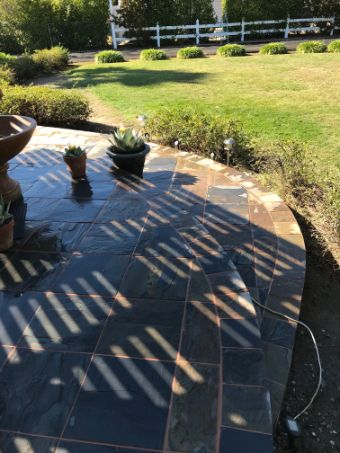Lake Forest Brick Masonry

Bricks have been in use for more than 6000 years in human history. Some of the most renowned ancient architectural masterpieces were constructed using bricks. These include the Egyptian Pyramids and the Great Wall of China. In those days, clay bricks, baked in the sun, were used. Masons even added grass and chopped straw to the clay to prevent cracking and distortion. Around 4000 BC, uniform molds were used to shape bricks precisely to the desired forms. This was a very important shift, as it improved the strength and durability of the whole structure.
Today bricks are still a common building material, albeit with many changes in production and construction. Modern-day bricks are made from clay and shale. They are then heated in kilns at temperatures reaching 2000 degrees Fahrenheit.
Mortar, cement-based, is used to bond and adhere to bricks together. To be effective, mortar has to be mixed in exact ratios and arranged to strengthen the structure and improve stability.
As it is today, Brick masonry can be defined as the placement of bricks in a systematic manner using mortar to bind bricks together and create a standing structure. The strength, integrity, and even the look is highly dependent on the craftsmanship of the masons. This is why at Lake Forest, we have sought talent from all over the region to deliver the very best to our customers.
Call us at 949-899-6146 to get your brick masonry in Lake Forest, California.
Different Types of Brick
Bricks vary in colors, form, and shape. Common types of bricks include:
- Fly ash bricks
- Common burnt bricks
- Concrete bricks
- Sand lime bricks (Calcium silicate bricks)
- Concrete bricks
Other less popular ones include cownose, channel, coping, bullnose, and hollow bricks.
Different Types of Brick Masonry
Cement Brick Work
This is perhaps the most common kind of masonry where cement is used as the mortar between bricks. Cement brickwork is classified into three.
First Class: The cement used here is made of lime. Bricks have sharp edges and surfaces, while the mortar joints do not exceed a thickness of 10mm.
Second Class: The bricks used here are rough and have irregular shapes, while the joint mortar thickness is 12mm.
Third Class: These bricks are softer with a rough surface and a distorted shape. This kind of bricks is mostly used for temporary structures and dry areas.
Mud Brick Work
This method involves using mud instead of cement mortar. The thickness of the mud mortar measures only 12mm. This is the cheapest way of installing bricks but can only be used on walls that do not exceed 4 meters in height.
Bonding Patterns
Bricks are arranged in various patterns to create a specific style. This is called bonding. Aside from aesthetics, bonding also helps to distribute loads throughout the structure to achieve maximum strength.
Common bonding patterns include:
- Stretcher bond
- English bond
- English Garden Wall
- Flemish bond
- Monk bond
- Header bond
- Stack bond
As mentioned earlier, the quality of a brick structure is highly dependent on the level of craftsmanship. At Lake Concrete Pros, we have gone over and above to hire and train our masons in various building techniques to deliver the high quality that we are known for.
Call us at 949-899-6146 to get your next brick project started.

